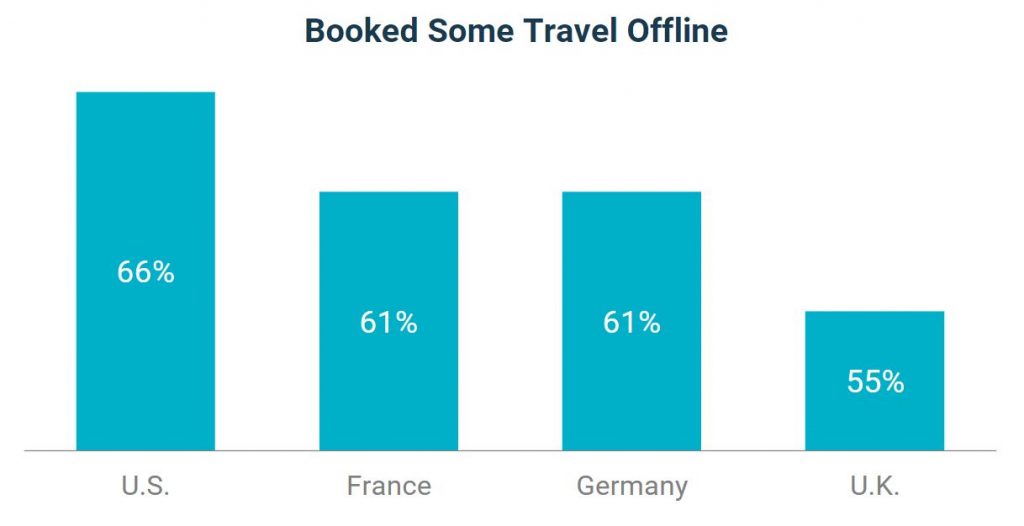The powerful rise of digital brings convenience to people in travel, business, shopping, learning and more. However, sometimes it is confusing and distracting for people due to tons of information. Therefore, marketers need to understand deeply the significance of the data delivery methods, especially how to convey complex information to customers in the most comprehensible way. According to the slides by Phocuswright (2017), a travel industry research authority, has led me to the opinion that to improve online services, realizing what travelers want – and do not want – in their digital journey is extremely essential.
Modern travelers
With the development of information, travelers become wiser and more selective. Based on the data provided by Phocuswright (2017), more than 80% of travelers shop for travel online. In addition, less than half of them find it difficult to make online travel plans. Customers adapt to the times rapidly and will bit by bit seek only useful, clear and reliable information. If the website causes frustration, there is no doubt that they may want to leave and book somewhere else. Therefore, the person who succeeds in the end must be the one who minimizes the customer pain points.
“That is true!”
The slides listed the problems U.S. and U.K. travelers face during travel planning as follows:
- Too much information (not personalized). Since there is no method of screening customers from the beginning, searchers, regardless of gender, age, or income, must all be at the same starting line.
- Time consuming. Facing with complicated procedures or not finding the suitable information takes plenty of time in the traveler digital journey. Getting an error in the last step is even more annoying. Some people will leave as they feel it is pointless.
- Price changes. The inconsistency in pricing really worsens the customer experience a lot.
- Lack of useful visual. Surely travelers have at least once encountered the actual product that is far different from the image on the internet. Unsatisfied expectations contribute to widening the gap between customers and travel agencies, especially the new ones.
These data are not exaggerated in the slightest because I also had similar problems while making travel plans. The chart below shows the percentage of people who booked travel offline:

These could be the reasons why:
- They are seeking for fully tailored services, where all the problems and suggestions are personalized.
- They are used to booking by that method or get some favorable conditions such as travel agency near home, discounts,…
- Real people and a real location are more believable than virtual numbers.
How to improve customer experience?
Problems arise throughout the slides and it is time to find a way to solve them.
- Simple operation.
Recall the days when people still used cash to shop, compared to now, when all payments were completed with just a few taps. The convenience of technology is undeniable, and it will develop even more if it is easy for everyone to use.
- An adequate amount of information.
Giving information excessively will make the viewers overwhelmed. People remember information best when they receive it slowly and efficiently.
- Building trust.
Nowadays, travelers not only make decisions based on reviews but also actual visuals. Achieving the authenticity as expected can increase customer loyalty.
Conclusion: Become a customer to understand customers
As a customer, there are certain reasons why I chose this presentations. Firstly, it only took me almost an hour to see all the slides, while I have to spend at least four hours reading 20 pages. This makes me think that travelers will lose search motivation when the information is too lengthy. Secondly, colorful pictures help memorize information better than plain words. A good impression on travelers is the key to success. There is nothing better than your customers remembering you.
Applying the above reasons in practice, I have learned the lesson that I have to put myself in the position of the customers to understand the challenges they are facing and fix those problems as soon as possible. The smoother the digital journey, the higher the reputation.
Bibliography
Phocuswright 2017. The Perfect Path: What Travelers Want – and Don’t Want – in Their Digital Journey. Accessed 21 March 2022 2017-0712-PhocuswrightWebinar-WhatTravelersWant-UserReplay.pdf